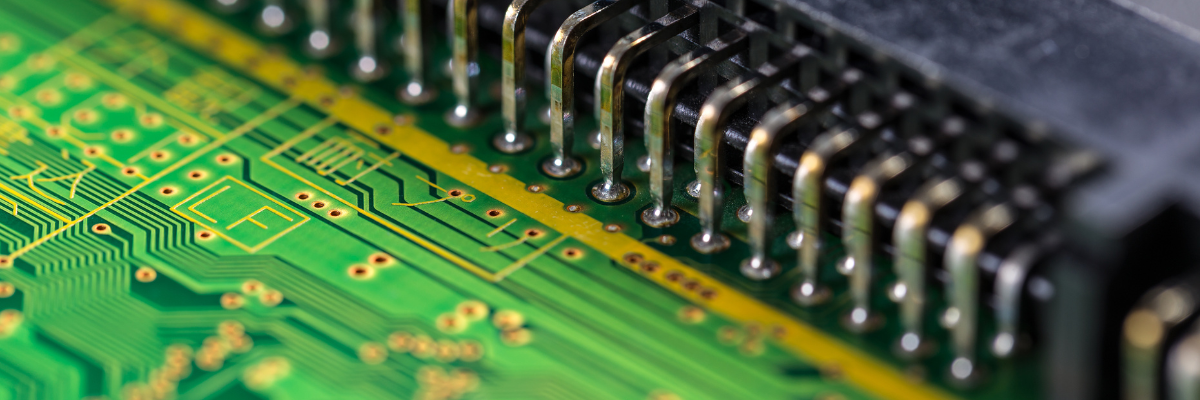Know the Types of Layers in a Standard PCB Layer Stack-up

Know the Types of Layers in a Standard PCB Layer Stack-up
With the increasing complexities and functionalities in printed circuit boards, PCB layouts need to accommodate several features and multiple layers and components within a compact-sized board. This arrangement and configuration of different layers within a PCB, such as signal layer, silkscreen, soldermask, and other layers, forms a standard PCB layer stack-up. It determines the number, type, and order of the layers used in a PCB design. The standard PCB layer stack-up depends on specific requirements and constraints of the design, such as the number of signal layers, power and ground planes, and if the boards are single-sided, double-sided, or multilayered. This post discusses the details of standard PCB layer stack-ups, their types, purpose, and more.
Layers in a Standard PCB Stack-up
Here are the layers in a standard PCB stack-up.
-
Signal Layer: There are more than one signal layers depending on the circuit density and application requirements. They comprise traces, pads, and components to route electrical signals throughout various parts of the circuit. They are located between the power and ground planes and help establish connectivity between components.
-
Ground Plane Layer: This layer is crucial as it provides a continuous ground plane for reference and acts as a return path for signals. It helps control EMI, distributes power throughout the board, and achieves impedance control. It has a large copper area which also works as a heat sink, and hence it enables heat dissipation.
-
Power Plane Layer: This layer ensures seamless and stable power supply across all the components on the PCB. It helps in reducing noise along with the ground plane layer and offers a low resistance path for supplying power. This is because it pairs with ground plane layer to enable decoupling capacitance. It offers the required rigidity, mechanical strength, and structural stability to the board.
-
Inner Signal Layers: In complex designs, multiple signal layers are sandwiched between other layers and they help route electrical signals. They offer additional routing space and establish connectivity among difficult-to-reach components. They provide signal isolation by separating sensitive signals from components and signal paths, which helps reduce noise.
-
Silkscreen Layer: This layer offers component outlines, reference designators, and other markings that aid the design engineer in assembly, testing, and debugging, and hence it is also called component overlay layer. It also displays certain component values, capacitance rating, polarized markings, and so on. This is essential for meeting polarization needs in board layout such as diodes, LEDs, polarized capacitors, and so on.
-
Soldermask Layer: This layer is applied over the copper traces and pads to prevent solder bridges during the soldering process and for protecting the properties of copper. It also works as an insulator between copper and other conductive materials. This helps prevent wrong electrical wiring, shorting possibilities, and so on.
-
Copper Plane Layer: This is basically a ground or power plane layer with a continuous copper coat or layer and is connected to the ground potential. When on the power plane, it distributes voltages throughout the board. When on the ground plane, it offers continuous ground reference for the circuitry. It also serves as a low-impedance return path for electrical signals, improves signal integrity and EMI compatibility.
-
Top and Bottom Signal Layers: These layers are similar to the first signal layer and contain traces, pads, and components. They route electrical signals through the components. As the term implies, they are located on the top and bottom surfaces of the board. An engineer can place test points or test pads on these layers to facilitate electrical testing and debugging for maintenance, rework, or manufacturing.
Why Accurate PCB Layer Stack-up is Important?
The standard PCB layer stack-up comprises a fine balance of conductive layers such as copper and insulating layers amid the board layers and ensures the design needs are met in terms of spacing, vias, holes, wires, and so on. While design and layout requirements would differ with each application, one can opt for custom PCB layer stack-up to meet the exact requirements in terms of signal integrity, electromagnetic compatibility, and so on. Whether standard or custom, here is why an accurately designed PCB layer stack-up is important.
-
An accurate PCB layer stack-up saves space and enables several features in today’s multilayered boards with several components. This improves its speed and functionality.
-
It protects internal layers and circuits from external electromagnetic interference (EMI), helps minimize radiation, and achieve impedance control. This is especially important for high-speed and high-heat generating applications.
-
By choosing custom options, you get the freedom to decide on the physical and mechanical aspects of the board such as thickness, number of layers, flexibility, layer arrangements that mitigate EMI and improve signal integrity, and so on.
-
It helps reduce cost and increases overall efficiency.
If you are an OEM or electronics manufacturer that regularly need or make PCBs for high-speed signals or high-heat applications, you will require an accurately designed and assembled PCBA with custom or standard PCB layer stack-up depending on the application requirements. Ensure you partner with a reliable PCB assembler that has enough experience and expertise in PCB design, manufacturing, and assembling. Twisted Traces is a known name in this segment, and offer custom options and end-to-end services. The company uses advanced PCB manufacturing processes, materials, and fabrication techniques.

